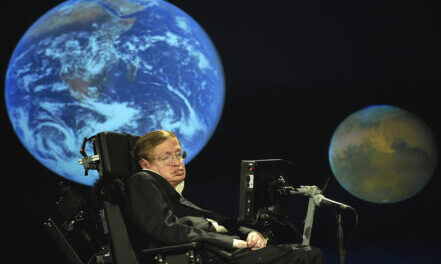
Stephen Hawking’s universe
Oxford-born cosmologist Professor Stephen Hawking (1942-2018) said:“Look up at the stars and not at your feet. Try to make sense of what you see and wonder what makes the universe exist. Be curious.” An extraordinary life lay ahead of the boy who would lie in his parents’ garden staring at the night-sky. At age 21, still at university, he found he had the neurodegenerative sclerosis known as ALS, with a life expectancy of just two more years ~ hopelessly wrong, as it turned out!
Hawking first worked with fellow Englishman Sir Roger Penrose (1931-) on the behaviour of black holes and the origin of the universe. He later theorised that black holes emit radiation (‘Hawking radiation’). Although Penrose was eventually awarded the Nobel Prize in Physics in 2020, it was Hawking who attained worldwide fame, due largely to his soldiering on in the face of increasing physical disability. His state-of-the-art voice synthesiser became synonymous with the public’s impression of a modern scientific genius.
Hawking’s most famous book, ‘A Brief History of Time’ (1988), sits proudly on many a home bookshelf, though is usually only partly read. His other books include ‘The Theory of Everything’ (2002). He was working on an alien detection project when he died.
(Top image: NASA HQ PHOTO at Flickr.com / CC BY-NC-ND 2.0)
